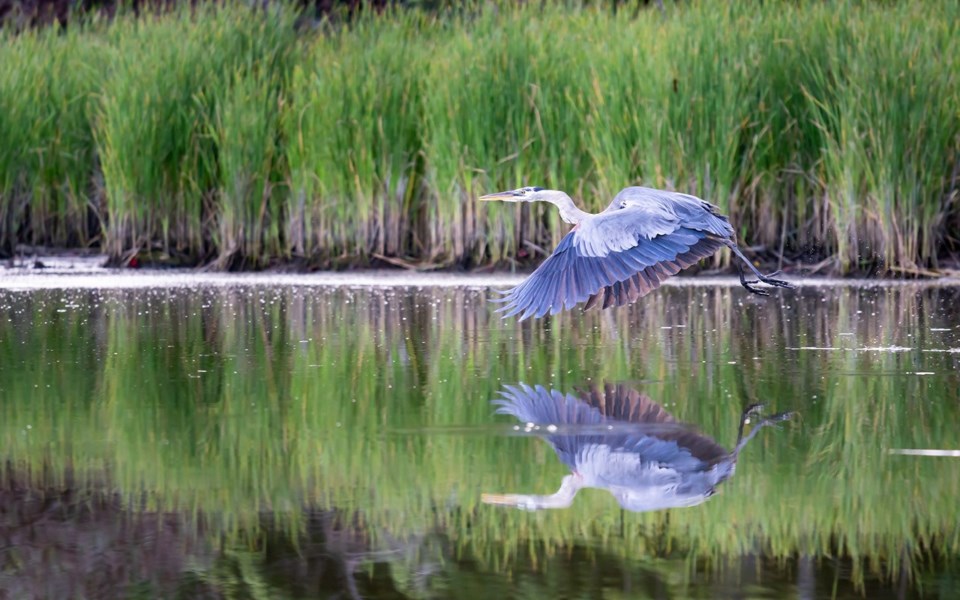A registered professional biologist is undertaking a study that aims to shed light on the health of the great blue herons that live in the Pemberton area.
"The key to this project and understanding their status is to find their nests," said Greg Ferguson, who is working in partnership with the Pemberton Wildlife Association (PWA) on the project.
"Nests give us a point where we can focus our monitoring efforts."
Ferguson said the birds have experienced a three-to-five-per-cent decline in the region since 1960 and are covered under the Species at Risk Act.
The great blue heron are a large, mostly grey bird with a long yellow dagger-like bill. The birds that live around Pemberton are a coastal subspecies of the heron that is non-migratory, added Ferguson.
Adults are tall, long-legged birds with a sinuous neck that forms an "S" curve at rest and in flight. They are white on top of their head as are the feather plumes on the back of their head and chest.
They can often be seen standing while foraging in open habitats, such as streams, lakes, wetlands and fields.
Ferguson said that it is vital to protect colonies of the birds, as that is where they breed. "If those get disturbed, that can have a big influence on the population," he explained.
As the birds are covered under the Species at Risk Act, there are implications when nests are found. If they are found on Crown land, a buffer zone is established to prevent activity such as logging that might disturb the birds. If the birds are found on private property, landowners can face restrictions.
"(Land owners) aren't allowed to disturb them under the law," explained Ferguson, adding that sometimes that affects people's willingness to report them.
In such cases workable solutions are possible, he said. "The government and ourselves will try to work with landowners to come up with an agreeable solution that meets everybody's needs."
In coordination with the PWA and the Stewardship Pemberton Society, Ferguson is currently seeking volunteers. He anticipates the monitoring work will get started in March or April, depending on the weather.
Ferguson is open to taking on volunteers of various skill levels, as training is provided.
To take part, volunteers should have an interest in nature and environmental science, as well as a willingness to sit for a couple of hours at a time (to carry out monitoring work).
The study area will include the area up to D'Arcy, Lillooet Lake and the Upper Lillooet River, said Ferguson.
Volunteers will have an involved job, tasked with documenting a number of important facts. These include information on where the sighting was made, what direction the bird was flying and any nesting activity (such as carrying twigs or calling young).
This is the fourth year of the heron count, with previous iterations focusing on the larger Sea to Sky area.
Ferguson noted that despite the smaller focus area, he welcomes any sightings from around the Sea to Sky corridor. The study is part of a broader project looking at species at risk in the corridor.
"The focus this year is on the Pemberton area with surveys for nests and important foraging areas being a key objective and hopefully nest monitoring," he said.
"However, we're still very much open to receiving information from anyone about heron sightings in the Sea to Sky corridor, in addition to Western screech owl and barn swallows."
The great blue heron, he added, is a majestic bird that many feel a connection to. "Lots of people, including myself, find it to be an amazing bird," said Ferguson. "It's a bird we see a lot of—so I think people are familiar with it. It's reflective of a healthy environment."
To take part or for further information, you can contact Greg Ferguson by email at [email protected] or [email protected].




